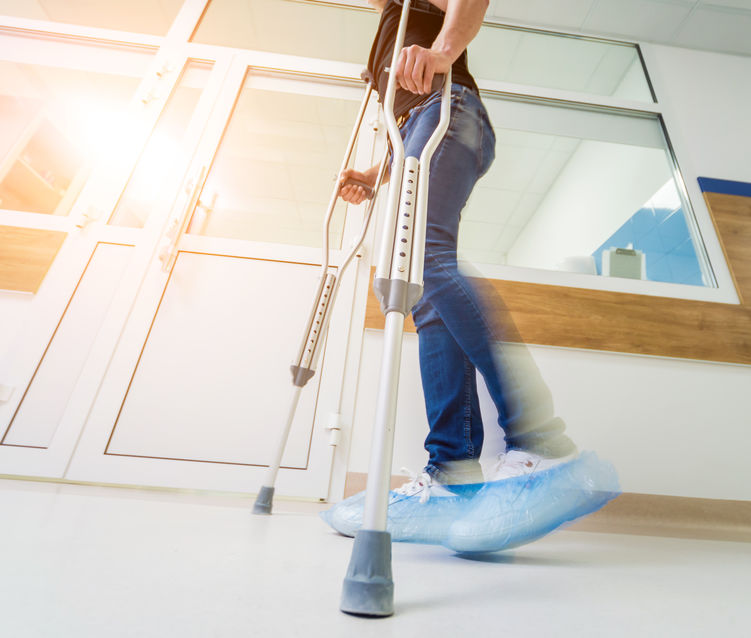
Accidents happen to everyone. No matter how healthy you are, all it takes is one missed stair or unseen patch of ice to put you on crutches. If you’ve never used crutches before, you may think there’s nothing to it—after all, it looks pretty straightforward, right? Well, things are a little different than how they might appear from the outside when you’re the one trying to nurse an injury back to health.
Here are a few tips to help you get around on your crutches for the next few weeks or months as comfortably and efficiently as possible!
1) Choose the right pair of crutches for your needs.
For the best possible healing experience, you need to have the right type and size of crutches to support you. If your injury is short-term, such as a broken limb or recent surgery, you’ll likely be using a pair of standard underarm crutches. Adjust the height so that when you’re standing straight with your arms slightly bent at your sides, the top of the crutches come one to two inches below your armpit. Your wrists should be resting on the hand grips. When using underarm crutches, it’s very important that you have quality cushioning for the armpit and hand grip areas. Always focus your weight in your hands, as pushing the crutches into your armpits can actually cause serious nerve damage and arm pain.
If you need crutches for longer-term healing, your doctor may recommend forearm crutches, which offer greater control and put less strain on your upper body. When you stand with your elbows slightly bent, the wrists of the crutches should align with your hips and the grip of the handle should be level with your wrists.
2) Take short steps and keep your eyes ahead.
When walking with crutches, start by standing up straight on your good leg. Then, put your weight on it, lift your crutches, and set them down about 6-12 inches in front of you. Remember to always support yourself with your good leg and/or your crutches, not your injured leg.
Also, you may reflexively want to look down at the ground when moving your crutches, but it’s important to look forward and check for potential obstacles you may need to avoid. The last thing you want to do is slip in a puddle and end up needing a wheelchair to replace your crutches.
3) Go slowly—especially on the stairs.
Injuries that limit your mobility can be frustrating, but taking your time and resting is essential to your recovery. Be patient and understand that you will be moving slower for a bit—and that’s okay. Especially when you’re using the stairs, you must not get ahead of yourself. Take a minute to rest in between each stair, leading up to the next one with your good leg and then slowly bringing your crutches and injured leg up together. If there’s a handrail, use it for extra support.
Alternatively, you can move up and down the stairs seated and push/pull your crutches with you. This may be the best technique to prevent further injury, as it greatly lowers the risk of you putting too much weight on your bad leg or falling and injuring yourself even more.
Are you going to need a little extra help getting around as you recover from an injury for the foreseeable future? BEK Medical has home mobility products that can help! Our universal crutches are lightweight and adjustable, convenient for children and adults of all sizes in need of support. We also have forearm crutches, canes, and other short and long-term use tools to help you stay mobile and independent.
Check out our mobility products online today and feel free to reach out to our team with any questions!
